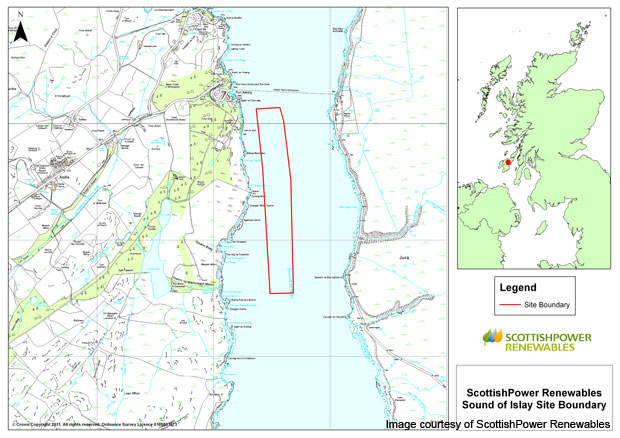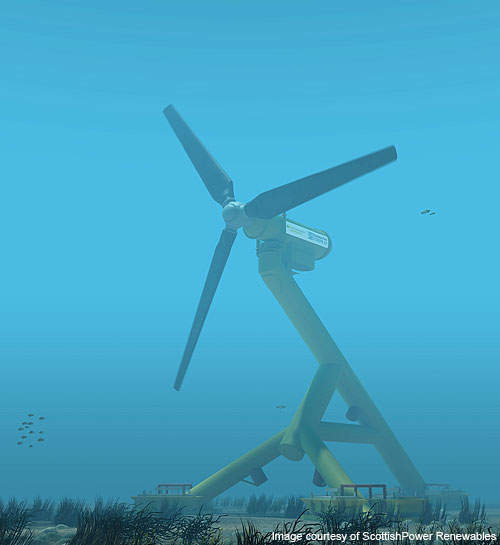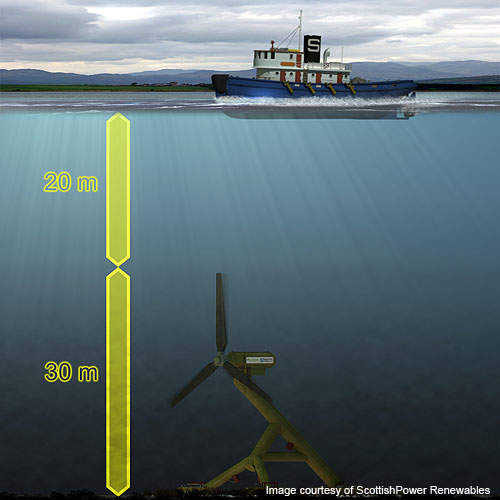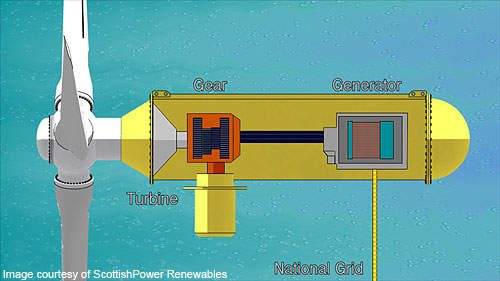ScottishPower Renewables (SPR), a subsidiary of Iberdrola, is building the world’s first commercial scale tidal energy project in the Sound of Islay situated between the islands of Islay and Jura. Known as the Sound of Islay Demonstration Tidal Array, the project received consent from the Scottish Government in March 2011.
Estimated to cost £40m, the tidal array is expected to see the beginning of preparatory works in 2012 and installation of the tidal machines between 2013 and 2015.
The project will generate 10MW of renewable energy, which is sufficient to power 5,000 homes on Islay. SPR has also signed an agreement with Diageo to provide electricity to other distilleries on Islay.
The project will also contribute to Scotland’s target of generating 80% of electricity from renewable sources by 2020.
Project
The Sound of Islay Demonstration Tidal Array is the first tidal project approved by Marine Scotland and the world’s first array of tidal power machines. Sound of Islay was chosen as the project site as it is characterised by strong tidal flows, shelter from storms and waves, and presence of grid capacity.
The project will feature 10 HS1000 tidal turbines developed by Norwegian-based Hammerfest Strøm. It is designed based on the 300kW prototype that has been operating in Kvalsundet, Norway since 2003.
The project will enable better understanding and learning of technical aspects related to the deployment, maintenance and development of monitoring and analyses systems. The learning derived from the project will be essential in developing the proposed 1.6MW Pentland Firth Tidal project in future, believes SPR.
Development
SPR is developing the project in association with the community partner Islay Energy Trust (IET), to provide social and economic benefits to the local community.
In 2008, SPR appointed Royal Haskoning to perform environmental impact assessment (EIA) and help the project obtain consent from the Scottish Government. The application for consent was filed in July 2010.
In August 2010, Burntisland Fabrications (BiFab) was awarded a contract worth £4m to build the first full scale working prototype turbine to be used in the project.
Hammerfest Strøm is currently developing a prototype, which will be deployed in Scotland at the European Marine Energy Centre (EMEC) test facility in Orkney in 2011. The company has secured a multimillion pound investment from Andritz Hydro of Austria through KPMG Corporate Finance to develop the prototype.
Hammerfest Strøm has also subcontracted Converteam, a power conversion specialist to supply major electrical equipments to develop 1MW HS1000 turbine. The subcontract calls for the supply of a power converter, transformers and switchgear.
Construction
The turbines will be placed 50m deep on the seabed at a distance of 1.5m diameter laterally and 20m diameter downstream. They will be arranged in four rows of 2/2/3/3 in north to south direction and will be spread over 1km-wide stretch between the Inner Hebridean islands of Islay and Jura.
Each of the 10 submerged turbines will have a rated capacity of 1MW and a life span of 25 years. Two undersea cables will connect the turbines to the substation on Jura Island.
Turbine technology
The HS device is an underwater turbine which rests on the seabed. It is similar to horizontal axis wind turbine with a rotor and variable pitch.
The nacelle is placed on a tripod-based structure, which uses gravity ballast in the legs. It is 15m-wide, 22m-long and is equipped with turbine generator, gearbox and associated components. It, however, does not yaw like a traditional wind turbine.
The rotor has a diameter of 23m and is approximately 33.5m-tall from the seabed.
The variable rotor pitch adjusts itself to the oncoming flow of tides thereby generating maximum energy at any given flow speed. It extracts energy from the flood as well as ebb tide when the tide reverses. The turbine rotates in opposite direction on the ebb tide.







